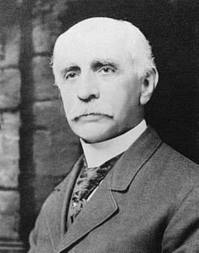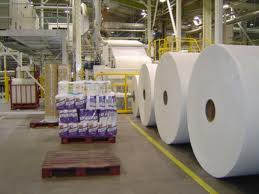Thursday, February 10, 2011
The Divine Wipes Of Man
Since we all became human, people have been trying to find successful ways to WIPE!
At first we just picked up what was available. Depending on geography that could be shells (SHELLS?), moss, leaves, grass, CORNCOBS!, sheep’s wool, snow, even parts of COCONUTS!?,
The ancient Greeks used clay and stone (STONE?). The Romans were fond of sponges attached to the end of a stick immersed in salt water. Kind of makes us all reconsider the phrase “wrong end of the stick” …….
Middle Easterners commonly used the left hand, which is supposedly still considered unclean in the Arabian region.
As we advanced and with the invention of paper and the printing press, the preferred items were newspapers, magazines, and pages of books.
It eventually dawned on us that we could SELL a product designed to wipe our butts!.
This happy event began approximately 150 years ago and it happened in AMERICA!
And, in no time at all, what was once a disposable became an indispensable through the genius of American ingenuity and marketing.
The first products were invented in New York by Joseph Gayetty in 1857. They were sheets of manila hemp infused with aloe and dispensed from Kleenex-like boxes.
He advertised his sheets prevented hemorrhoids. He had his name printed on every sheet. GAYETTY’S MEDICATED PAPER…
But Gayetty had limited success. Americans had the Sears Roebuck catalog, It came in the mail for free.
Then, in 1890, two brothers, named Clarence and E. Irvin Scott, put toilet paper on a ROLL! The Scotts' were more successful because they sold toilet paper to hotels and drugstores.
But it was very difficult to get the American public to openly buy the product. Bodily functions were embarrassing.
The Scott’s didn't even take credit for their product until 1902 because they were also embarrassed. Nobody wanted to ask for it by name….toilet paper.
Then a new technology spurred more widespread acceptance.
At the end of the 19th century, more and more homes were being built with sit-down flush toilets tied to indoor plumbing systems.
People now required a product that could be flushed away with minimal damage to the pipes…..out with moss, corncobs, and Sears Catalog pages.
Soon toilet paper ads were stating that the product was recommended by not only doctors, but plumbers.
In the early 1900s, toilet paper was still being marketed as an item for medicinal purposes.
But in 1928, the Hoberg Paper Company tried something different.
The company introduced a brand called CHARMIN and fitted the product with a feminine logo that depicted a beautiful woman.
This ad campaign was brilliant! By focusing on softness and femininity, the company could avoid talking about the actual purpose of toilet paper.
Charmin was so successful that the strategy helped the brand survive the Great Depression. They also started, in 1932, to package Charmin in economy-size packs of four rolls.
In decades to follow, the delicate ladies were replaced with babies and bear cubs.
In 1935, Northern Tissue advertised "splinter-free" toilet paper. Yep, you read that right; early paper production techniques sometimes left splinters embedded in the paper. Let us pause and contemplate that for a moment….
By the 1970s, American life without toilet paper was…un-American.
So important is toilet paper that in December 1973, when Tonight Show host Johnny Carson joked about a toilet paper shortage during his opening monologue there was a run on the product across the country.
In 1978, a TV Guide poll named Mr. Whipple --the nice grocer who implored customers, "Please don't squeeze the Charmin" -- the third best-known man in America, behind President Richard Nixon and the Rev. Billy Graham.
Americans spend more than $6 billion a year on toilet tissue -- more than any other nation in the world.
Americans, on average, use 57 squares a day and 50 pounds a year.
Today there are over 5,000 different companies producing bathroom tissue around the world trying to make our lives more convenient, clean and efficient. In a study done back in 1997, it was estimated that 71.48 frugal people contribute to the waste of one roll of 1,000 sheet single ply toilet paper everyday.
With a little over 6 billion humans living on earth, that calls for the daily production of 83,048,116 rolls per day,
30.6 billion rolls per year and 2.7 rolls per second.
That is 80% greater than our daily consumption or use of salt, 63% greater than our average use of milk, and 84 billion more people served annually than McDonald’s fast food restaurants. Don’t tell the current administration….
The average sheet of toilet paper weighs in at a little over .22 grams and 4.0625 inches per square reaching approximately338.5 feet per roll and 5.3 million miles of toilet paper per day.
Furthermore, Americans GO an average of 6 times per day, adding up to as much as 47 minutes in a single 24 hour time period.
Women spend more time with toilet paper than men. Approximately 32 months in a lifetime versus 25 months for men
An average tear of 5.9 sheets is ripped from the roll with each reach.
44% of people wipe from front to back, and 60% look at the paper having just wiped.
42% fold, 33% crumple, 8% do both fold and crumple, 6% wrap it around their hands and at least 50% of people have at one time or another wiped with leaves, or something foreign to toilet paper (8% hands, 1% money).
The next time you visit the grocery store, take some time to wander the toilet paper isle.
What a wonderful world of hygiene and convenience we have wrought over the last 100 years.
Charmin, Charmin Ultra, Charmin double, Charmin Triple, Charmin unscented/scented, Best Yet, Quilted Northern, Cottonelle, Angel Soft, Soft’n Gentle, Green Forest, Scott, or even Brawny and all of their own double, triple, pillow soft, and perfumed or unscented choices….AWESOME!
T.P. is our friend and it’s okay to talk about it…even if it has become somewhat of a metaphor for the economy.
Subscribe to:
Posts (Atom)

























